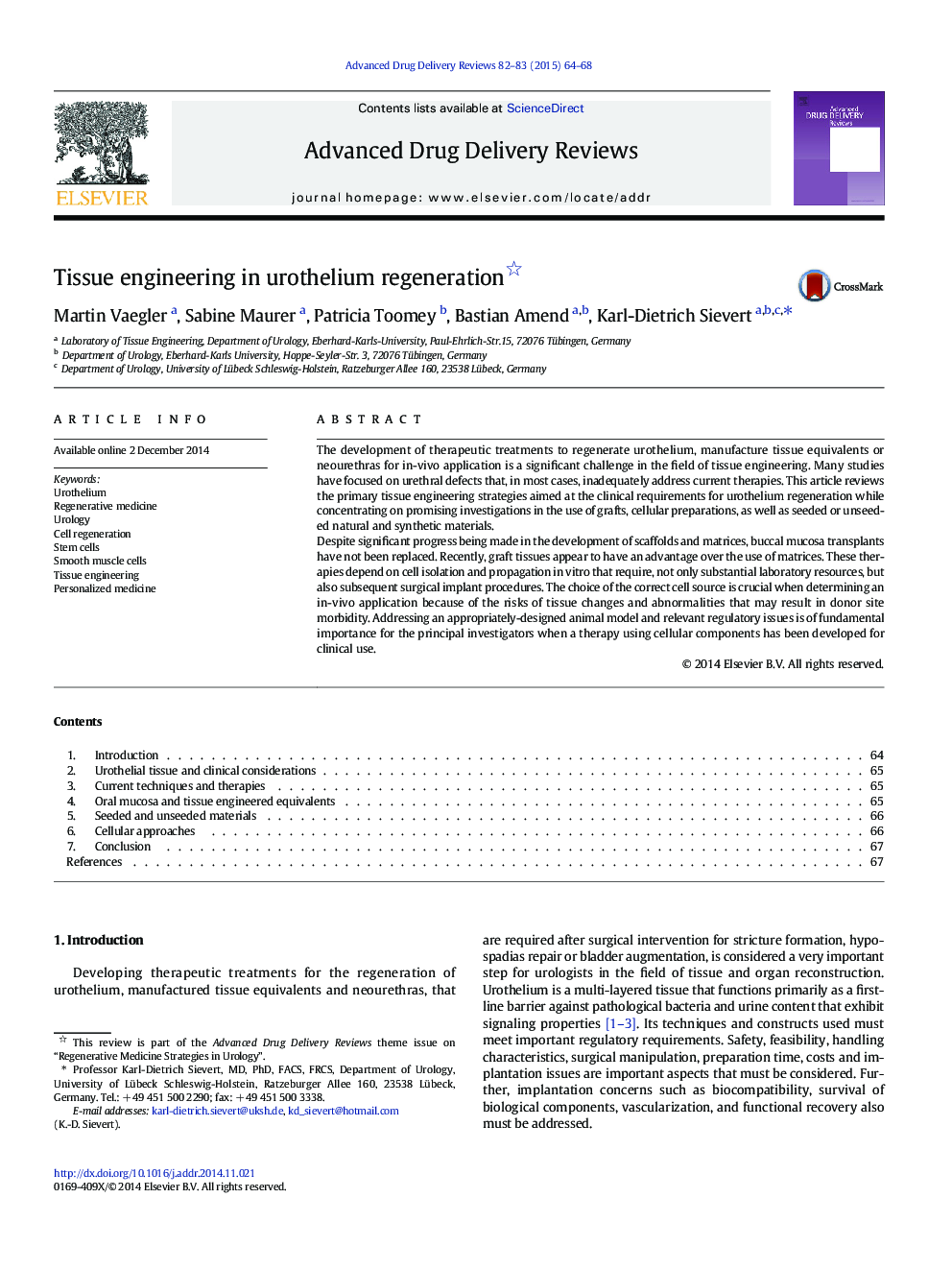| Article ID | Journal | Published Year | Pages | File Type |
|---|---|---|---|---|
| 2070772 | Advanced Drug Delivery Reviews | 2015 | 5 Pages |
The development of therapeutic treatments to regenerate urothelium, manufacture tissue equivalents or neourethras for in-vivo application is a significant challenge in the field of tissue engineering. Many studies have focused on urethral defects that, in most cases, inadequately address current therapies. This article reviews the primary tissue engineering strategies aimed at the clinical requirements for urothelium regeneration while concentrating on promising investigations in the use of grafts, cellular preparations, as well as seeded or unseeded natural and synthetic materials.Despite significant progress being made in the development of scaffolds and matrices, buccal mucosa transplants have not been replaced. Recently, graft tissues appear to have an advantage over the use of matrices. These therapies depend on cell isolation and propagation in vitro that require, not only substantial laboratory resources, but also subsequent surgical implant procedures. The choice of the correct cell source is crucial when determining an in-vivo application because of the risks of tissue changes and abnormalities that may result in donor site morbidity. Addressing an appropriately-designed animal model and relevant regulatory issues is of fundamental importance for the principal investigators when a therapy using cellular components has been developed for clinical use.
Graphical abstractFigure optionsDownload full-size imageDownload high-quality image (213 K)Download as PowerPoint slide
